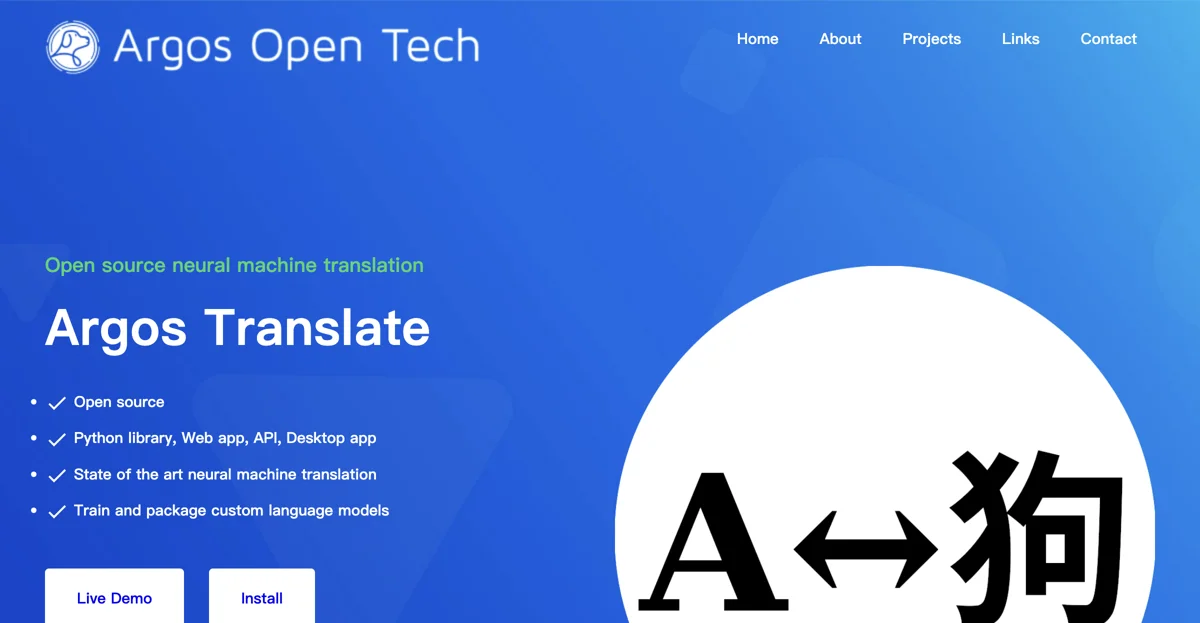Argos Translate stands out as a comprehensive open-source solution for neural machine translation, catering to a wide array of applications through its Python library, web app, API, and desktop app. This versatile tool leverages the power of OpenNMT for translations, ensuring state-of-the-art accuracy and efficiency. Users can easily train and package custom language models, making Argos Translate adaptable to specific translation needs. The tool supports the installation of language model packages, which are conveniently packaged as zip archives with a ".argosmodel" extension, containing all necessary data for translation tasks.
One of the standout features of Argos Translate is its integration with LibreTranslate, an API and web-app that builds upon the core functionalities of Argos Translate to offer a more user-friendly interface for translation tasks. This integration exemplifies the tool's commitment to accessibility and ease of use, allowing users to perform translations directly from their web browsers or through API calls.
For developers and tech enthusiasts, Argos Translate offers a Python library that can be seamlessly integrated into existing projects. The library provides a straightforward API for downloading and installing language models, as well as for performing translations. This makes it an invaluable tool for developers looking to incorporate machine translation capabilities into their applications without the need for extensive setup or configuration.
Argos Translate also emphasizes the importance of community and open-source development. The project encourages contributions from developers around the world, fostering a collaborative environment for improving and expanding the tool's capabilities. With its permissive license, Argos Translate ensures that its technology remains accessible to all, promoting innovation and creativity in the field of machine translation.
In summary, Argos Translate is a powerful, flexible, and accessible tool for neural machine translation. Its open-source nature, combined with its comprehensive set of features, makes it an excellent choice for developers, researchers, and anyone in need of reliable translation technology. Whether you're looking to integrate machine translation into your application, train custom language models, or simply explore the possibilities of neural machine translation, Argos Translate offers a robust platform to achieve your goals.

